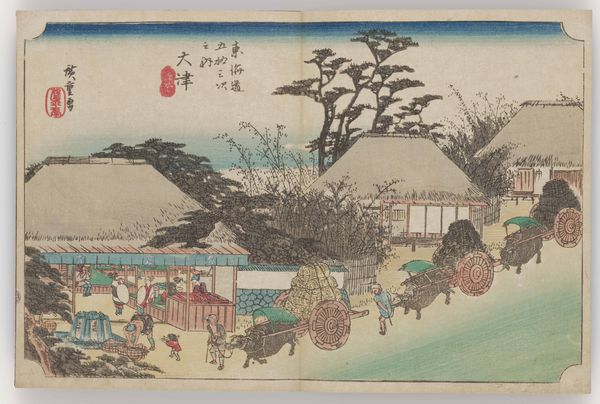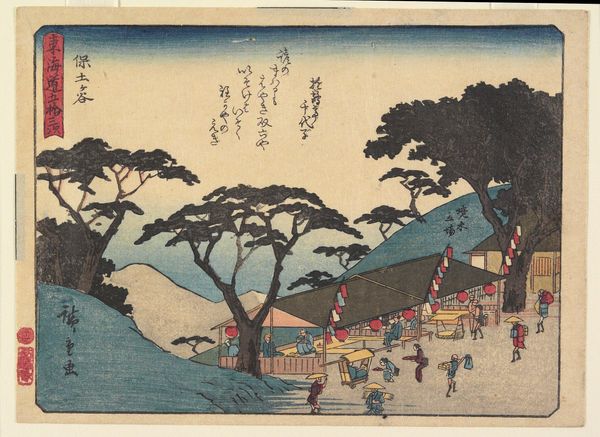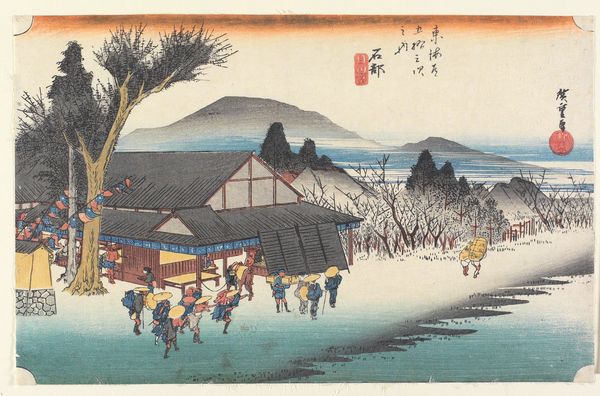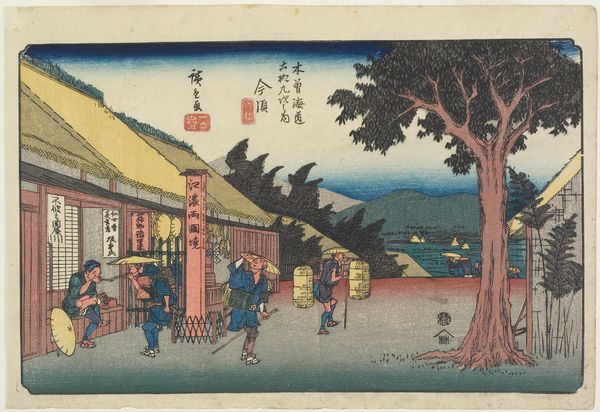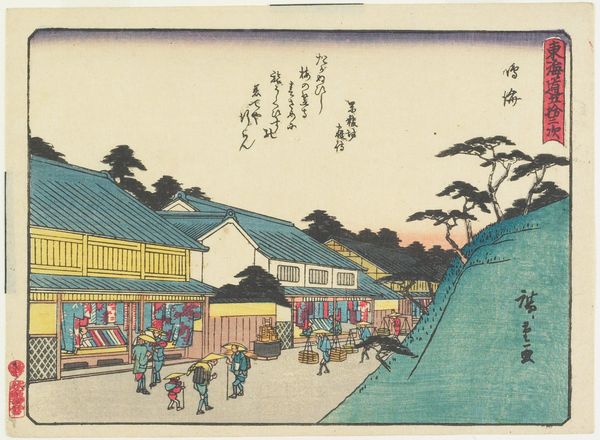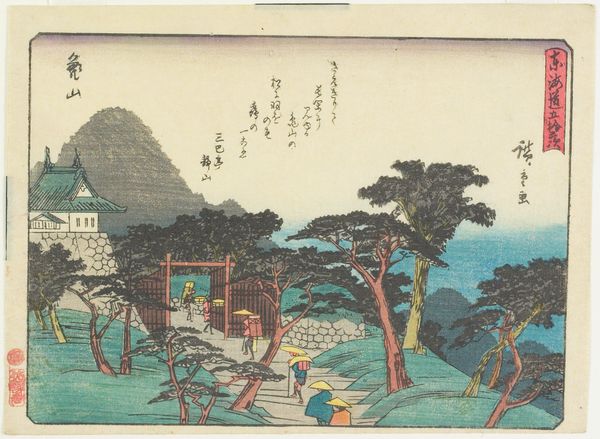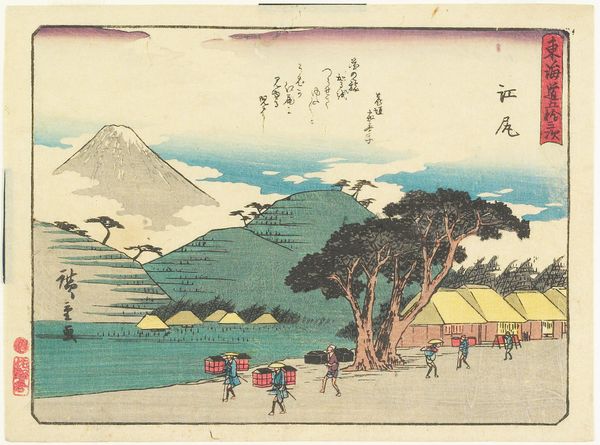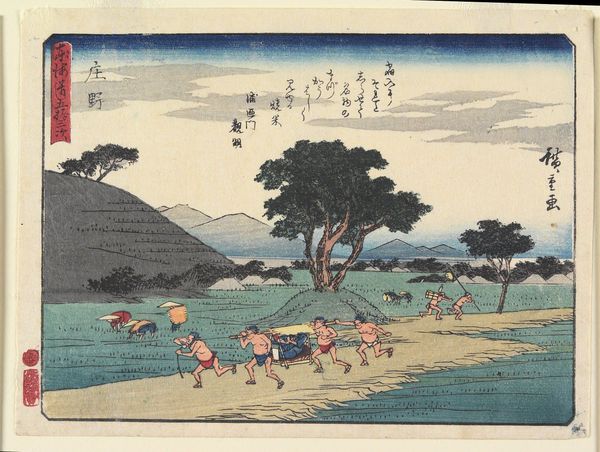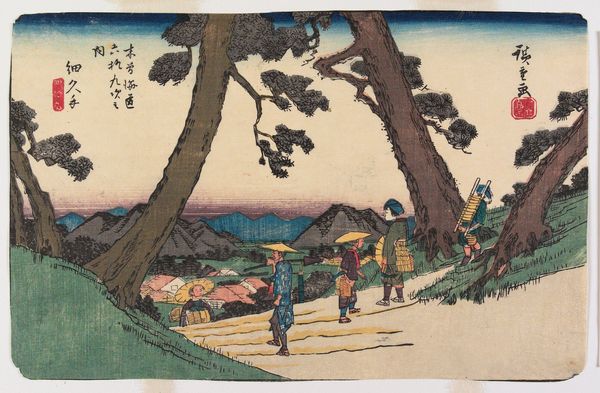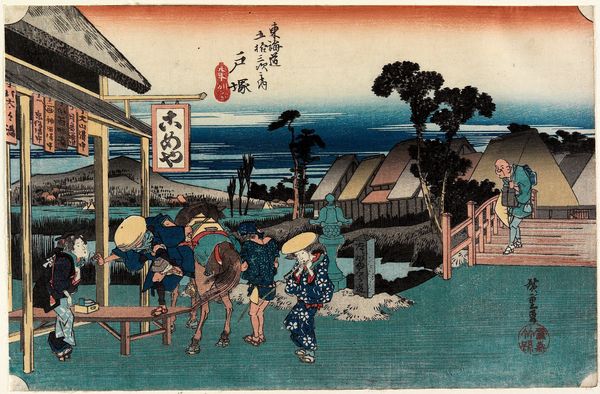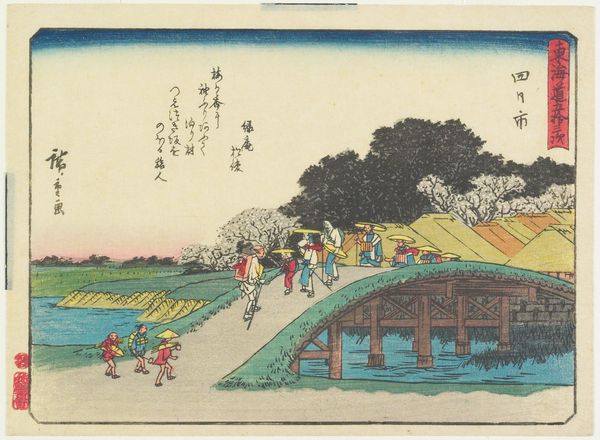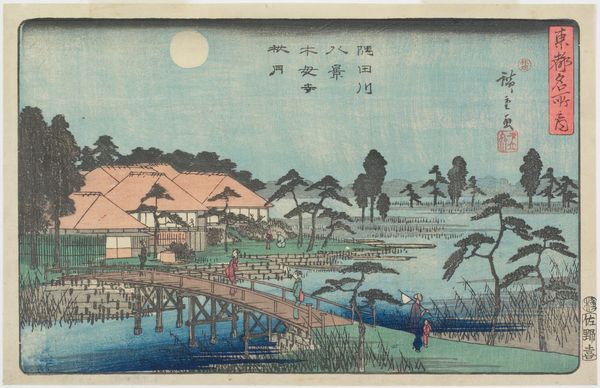
print, ink, woodblock-print
#
water colours
# print
#
asian-art
#
landscape
#
ukiyo-e
#
japan
#
ink
#
woodblock-print
#
genre-painting
Dimensions: 8 3/4 × 13 3/4 in. (22.2 × 34.9 cm) (image, sheet, horizontal ōban)
Copyright: Public Domain
Curator: Before us hangs "Ōtsu," a woodblock print created by Utagawa Hiroshige around 1832-1833. It’s part of his "Fifty-three Stations of the Tōkaidō" series. Editor: My first thought? So peaceful. A slice of life bathed in soft hues, despite the working animals pulling loaded carts, there's a harmony, almost a lullaby in its visual rhythm. Curator: Hiroshige's Tōkaidō series, including "Ōtsu", provides insights into early 19th-century Japanese society and landscape. Consider that these prints were affordable, mass-produced images that democratized art. Editor: I see it. And these aren't grand, heroic landscapes. They depict daily routines, which has a subversive, down-to-earth power, wouldn’t you agree? Everyday labor elevating into beauty... plus a killer sense of composition, of course! Curator: Absolutely. And thinking about the genre painting aspect of this Ukiyo-e, how the artist has portrayed laborers—perhaps farmers, tradespeople, carters, porters—situates the commoner within the geographic imaginary of Japan. It's a challenge to existing social hierarchies. Editor: True! There's no pomp and circumstance here. Just honest toil under the sky. Did you see that splash of cerulean sky, its perfect reflection over the rooftops? Even these small things are amazing! It suggests to me not only how gorgeous is our nature, but it shows how equal all of us humans are in relation to it. We work under the same sky and drink the same water. I may be digressing… Curator: Not at all! Those small details add such richness and depth. In analyzing these works, it is vital to recall the historical backdrop of Japan’s feudal system and how that shapes our interpretations today. It speaks to resistance! Editor: Yeah! Thank you so much! When I look at it that way, now I get it… it reminds me that beauty can be found everywhere—not just in palaces or grand vistas, but right there on a dusty road, in the labor of our neighbors. It brings the "exotic far East" way closer to our homes. Curator: A sentiment that connects powerfully even across centuries, showing the ongoing relevance and resonance of this kind of art. Editor: Definitely gives you something to think about!
Comments
No comments
Be the first to comment and join the conversation on the ultimate creative platform.
